Ukraine’s Rare Skyguard Air Defense System Attacked By Russian Drone In Video
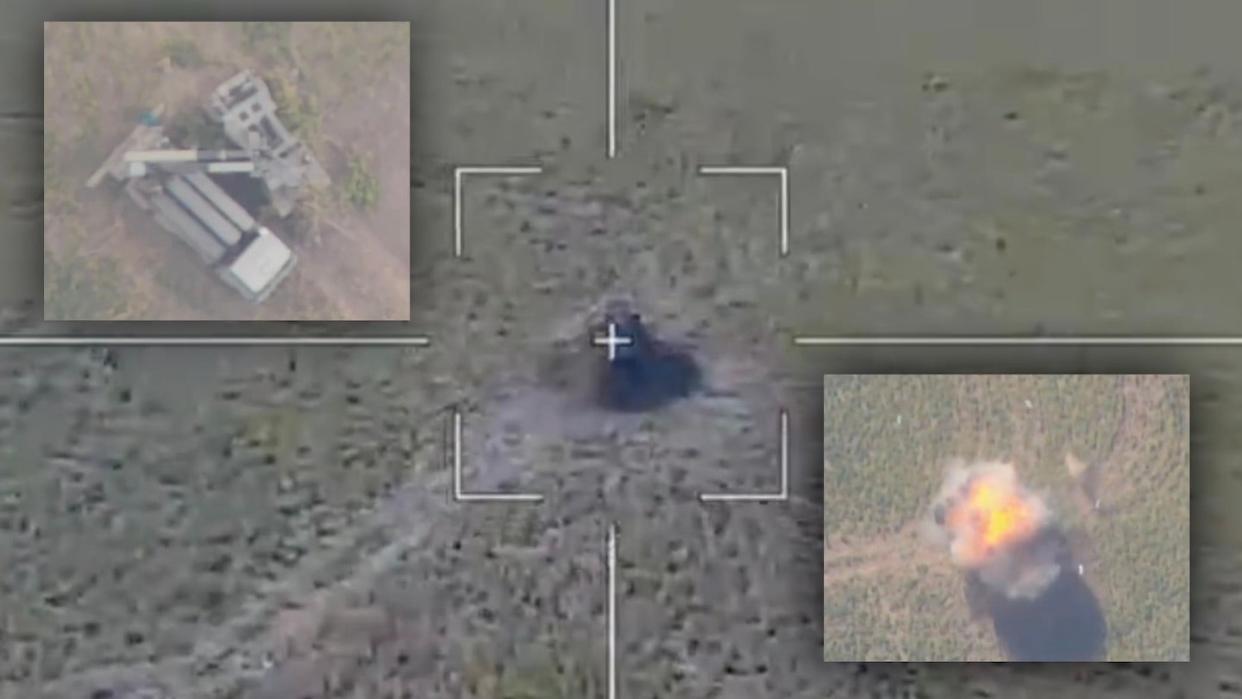
Video footage has emerged that appears to show a Russian loitering munition, or kamikaze drone, striking a Skyguard control station of the Ukrainian armed forces. The control station further looks to be part of a ground-based air defense (GBAD) system that uses the Aspide surface-to-air missile. If that was indeed a Skyguard/Aspide system, it may be one of the only examples of its kind received by Ukraine to date. The video underscores the ongoing threat Russian loitering munitions pose to Ukrainian GBADs, which the country desperately needs.
The footage appears to show a Russian Lancet loitering munition, identifiable by its distinctive cruciform wing configuration, targeting the system. While some accounts have suggested the event took place near Muzykivka in the Kherson Oblast, The War Zone cannot independently verify the location of the attack. In total, only a handful of systems able to fire Aspide missiles have been pledged to Ukraine since October 2022 by Spain and Italy. Of those, just one Skyguard/Aspide system appears to have been promised, although whether that system has been delivered remains unclear.
https://twitter.com/UAWeapons/status/1683139938743644162?s=20
A bird’s-eye perspective — presumably shot from a Russian spotter drone — in the opening parts of the video shows components of the system positioned in the middle of a field. The footage then transitions to show a missile launcher and a reloading vehicle close together, during which a launcher cell can be seen being transferred from one to the other. In addition, an individual is seen near the reloading vehicle.
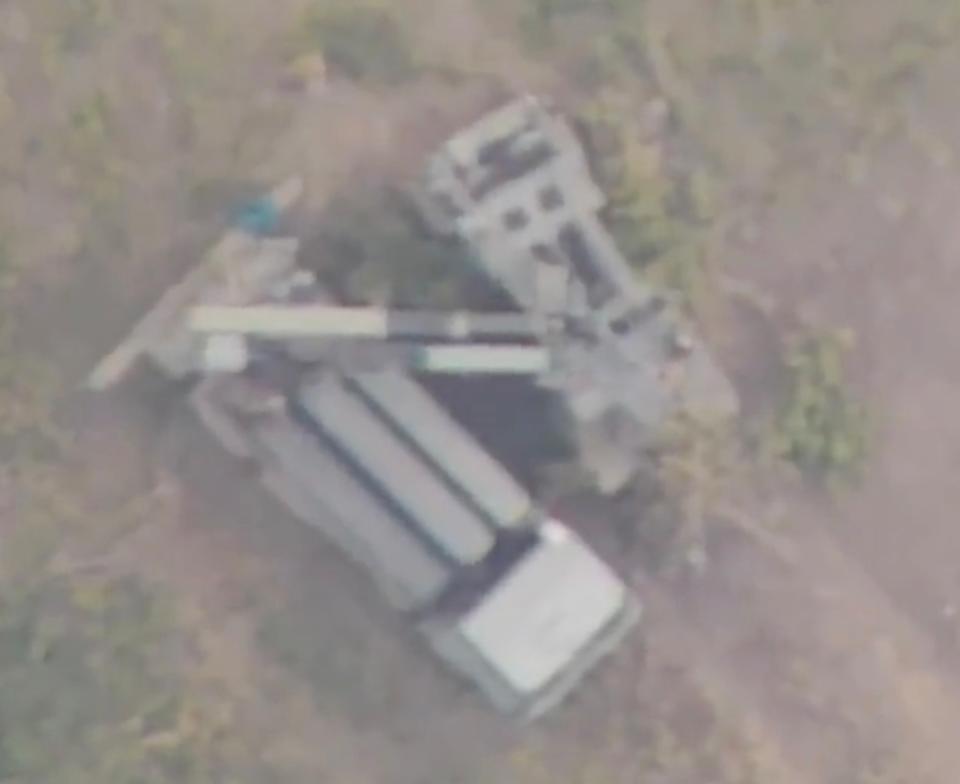
https://twitter.com/magictouch190/status/1683184016466362368?s=20
After the drone locates a group of military personnel walking on a pathway to the side of the field, it then pinpoints the control station positioned in another part of the field, at first from a distance and then directly from above. Battery control stations represent key components of surface-to-air missile systems. In the case of the Skyguard/Aspide system, the control station is located in a unified cabin, mounted on a two-axle trailer. It features both a detection radar — operating in the Z band with a range of up to 20 kilometers — and a tracking radar — with a range of around 15 kilometers. Video equipment and computers are housed inside the station.
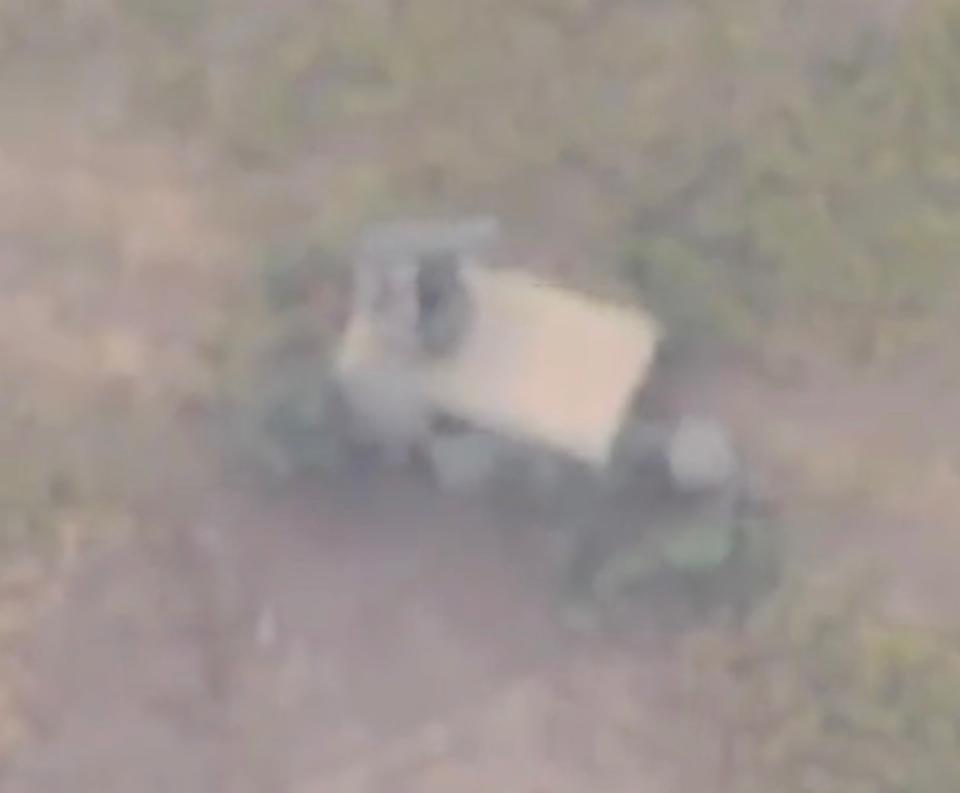
We then see footage captured from the loitering munition in question hurtling towards the control station, which cuts just prior to the moment of impact. Video taken from another drone filming the scene from above confirms that the loitering munition directly struck its target, appearing to splinter into pieces on impact.
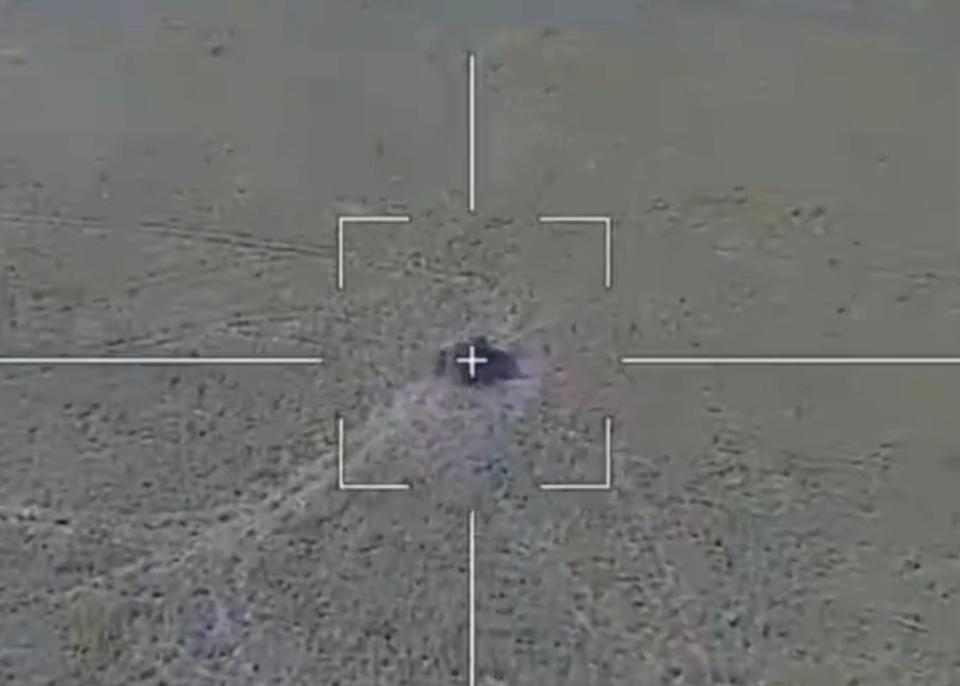
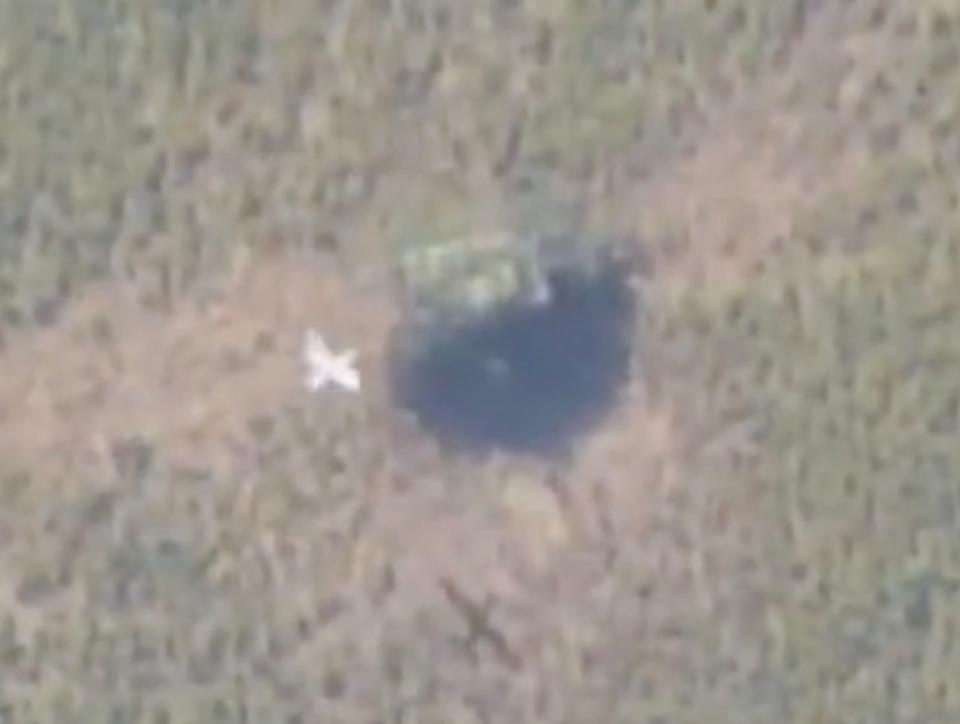
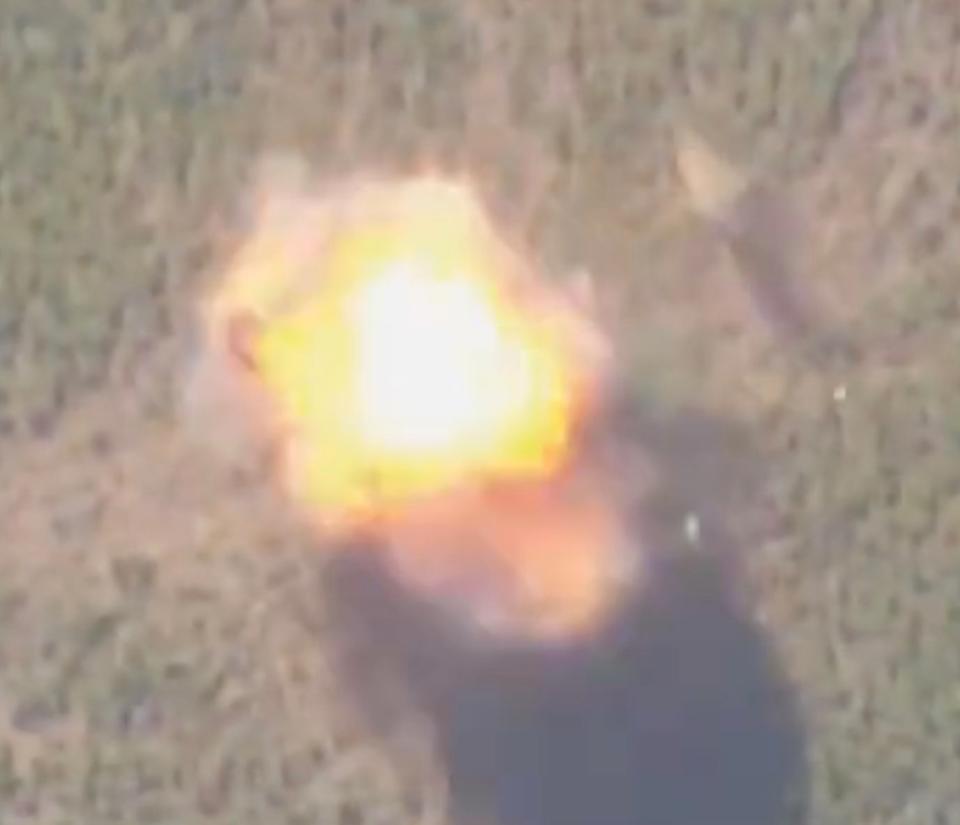
There has also been some speculation that the control station, and even the launcher, may have been decoys. However, footage from the attack does show one of the launchers being loaded and a radar turning above the control station, which one would not expect to see at a mock air defense site.
https://twitter.com/UAWeapons/status/1683141913774284801?s=20
According to the Oryx open source intelligence group, which only tabulates destroyed, damaged, and missing vehicles from the war for which it has visual confirmation, the control station was destroyed as a result of the attack. If the attack was indeed carried out by a Russian Lancet loitering munition, the location of the SAM would likely have been relatively close to where the munition was launched from. According to Russian state media, variants of the Lancet have a range of up to a few dozen miles, but that is under ideal circumstances. The limitations of line-of-sight control usually makes the actual usable range much smaller. Regardless, Ukraine needs air defenses that have some reach near the front as Russian combat aviation has proven to be a major threat during the still-young counteroffensive.
Skyguard has roots dating back to the 1960s, when Swiss Oerlikon Contraves Defence — later known as Rheinmetall Air Defence AG — began developing a system to replace the Contraves Super Fledermaus system in the Swiss Air Force. The third generation of the system, Skyguard 3, consists of a fire control station connecting a combination of up to four effectors. These include the Oerlikon Twin Gun GDF007, Oerlikon Revolver Gun Mk2, and missile launchers.
https://www.youtube.com/watch?v=BgdWNryUhr0
Aspide is an Italian surface-to-air missile system first produced in the 1970s by what was then known as Alenia Aeronautica and is now Selenia, which is a part of Leonardo under the MBDA European missile consortium. As we have previously outlined, Aspide missiles — reminiscent of the U.S.-made AIM-7 Sparrow — come in four different variants, Mk.1, Mk.2, 2000, and Citedef. The Aspide 2000 variant can be launched from the export versions of the Skyguard system and the Spada 2000 system built by Selenia, and is equipped with a 77 pound (35 kilogram) high-lethality fragmentation warhead.
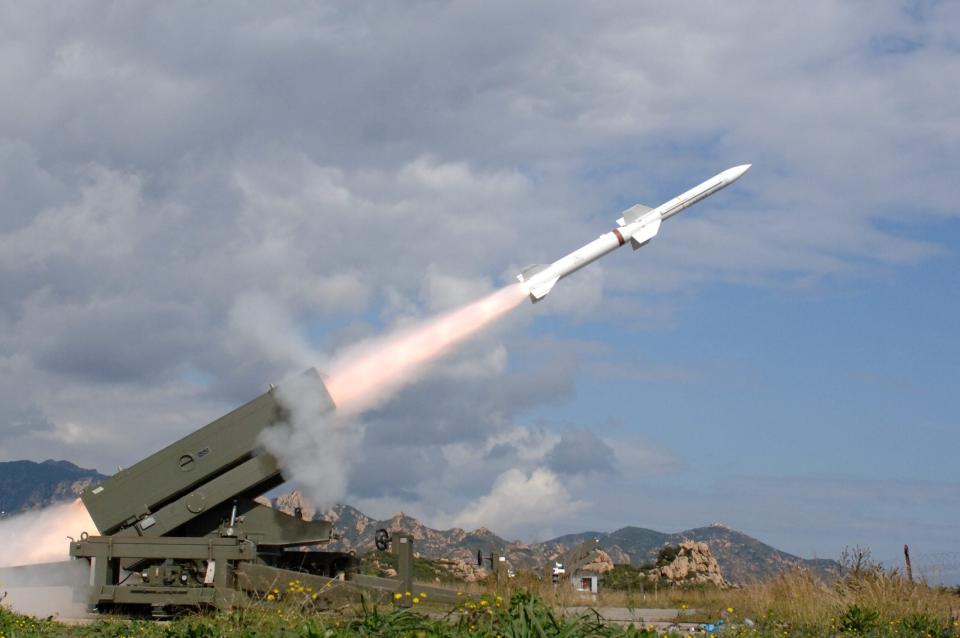
The loss of the system’s control station is a significant blow for Ukraine, at least in part because only a small number of systems that utilize Aspide missiles have been promised and delivered to the country.
Back in October 2022, Spain announced that it would be sending four complete ground-based surface-to-air missile systems utilizing Aspide to Ukraine, which had previously been used by the country’s air force. The Spanish government also pledged to send a number of Homing All the Way Killer (HAWK) air defense systems at that time. This followed the training of 19 Ukrainian military personnel members on Spain’s Spada/Aspide systems. The first of the systems pledged were subsequently delivered to Ukraine in November 2022, which Oryx identifies as an ex-Italian Spada 2000 system capable of firing Aspide 2000 missiles.
Then, in February of this year, Italy pledged an undisclosed number of Spada and Skyguard systems for Ukraine. Oryx lists one Spada/Aspide battery and one Skyguard/Aspide battery as part of that agreement. As Spain has provided Ukraine with Spada/Aspide systems, Oryx, as well as the Ukrainian Weapons Tracker open-source account, have suggested the destroyed Skyguard command station is the single Italian variant pledged to Ukraine.
The delivery of Western-supplied SAMs — including the Patriot, IRIS-T SLM, and the National Advanced Surface-to-Air Missiles (NASAM) systems — to Ukraine has been significant in terms of replacing the country's Soviet-era air-defense assets with more advanced Western equipment. The shipment of modern missiles to accompany those systems has also proved critical in replenishing Ukraine's air defense missile stockpiles, which internal Department of Defense documents assessed to be at precarious levels back in April. Still, there are clearly not enough systems of various capabilities to go around.
As The War Zone has outlined previously, those systems are frequently called into action in Ukraine, especially around the capital Kyiv, to defend against Russian missiles, drones, and other aerial threats. The country's ground-based air defenses have been essential to preventing Russia's military from gaining air superiority, which has significantly hampered its invasion operation.
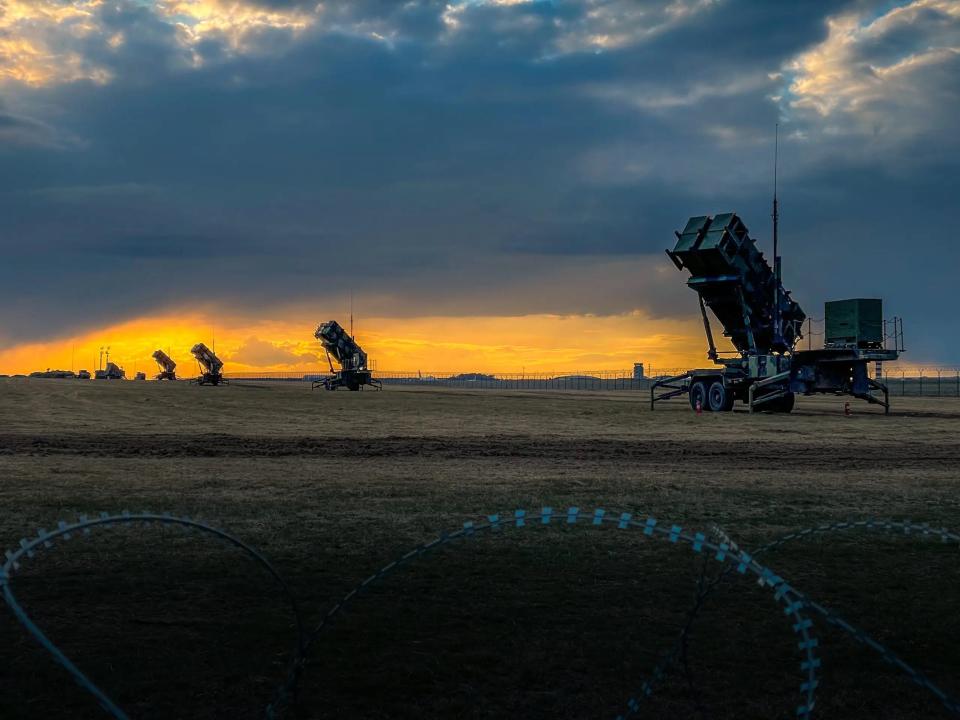
The systems have had to work hard against the impact of Lancet drone strikes in particular. Designed primarily to operate via man-in-the-loop control, transmitting video from their onboard targeting system to a controller via line-of-sight datalink, the frequency of Lancet drone attacks continues to surprise those at the sharp end of the war in Ukraine and those working behind the front lines. As Yuriy Sak, an adviser to Ukraine's defense minister, recently told Reuters, “Every day we shoot down at least one or two of these Lancets... but it's not a 100% interception rate unfortunately.”
Compared to the often highly expensive surface-to-air missile systems delivered to Ukraine via foreign aid, the cost to produce Lancet drones for Russia — approximately 3 million roubles (around $35,000) — is fractional compared to the value of their impact on the battlefield. Following recent promises to increase drone production, Kalashnikov — the Russian company producing the Lancet — released a video of its Lancet facilities via Telegram. According to its caption, the drone's chief designer, Aleksandr Zaharov, requires a segway to navigate the sprawling operation. “Two hundred thousand [Lancets] are already ready, another million are on the way,” according to the video caption.
https://twitter.com/sambendett/status/1680576870226460673?s=20
Moreover, Lancet munitions have emerged as very important precision tools for Russian forces, proving especially effective when targeting air defense systems, artillery systems, and combat vehicles. Earlier in June, for example, a Russian loitering munition — allegedly a Lancet drone — struck a Hensoldt TRML-4D truck-mounted radar of the Ukrainian armed forces. That radar is a key component of the IRIS-T SLM surface-to-air missile system, of which Ukraine may have received just one of to date. Moreover, within the last few weeks, for example, video was released of a Lancet loitering munition supposedly striking a P-18 surveillance radar. Strikes on other targets, like artillery pieces and combat vehicles occur daily.
https://twitter.com/WarMonitors/status/1668989306684203008?s=20
With that said, Ukrainian air defense assets will continue to be a top target for Russian drone strikes in the future, given their importance in defending Ukrainian airspace.
Contact the author: oliver@thewarzone.com

